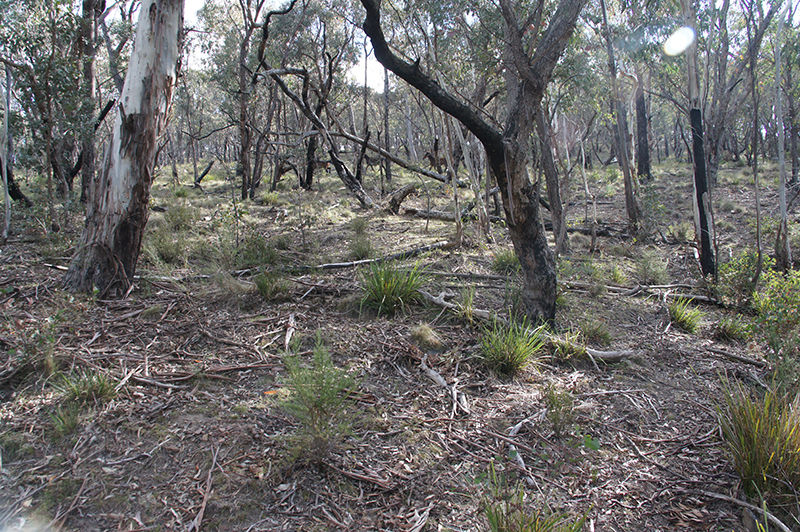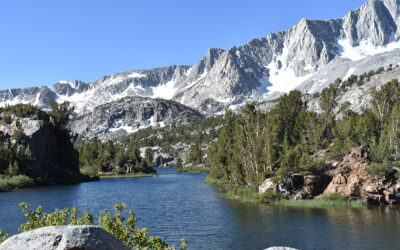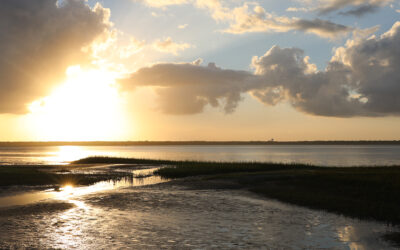In a district known for its wildflowers, Mintbush is a colorful plant of the streamsides
The Curse of the Wild Horses: Deromanticizing Feral Horses to Save Australia’s Kosciuszko National Park
Stewardship
April 2021 | Volume 27, Number 1
This article documents two walks in the Byadbo Wilderness Area of Australia’s Kosciuszko National Park that revealed inordinate numbers of feral horses, whose population has increased rapidly despite ongoing drought and consequent environmental damage (Figure 1). Their unchecked numbers, increasing at an inordinate rate, seriously threaten catchments throughout the 6,900-square-kilometer park (2664 square miles), as well as its high country and Alpine biodiversity. But feral horses, otherwise known as brumbies, are de facto protected from culling or rehoming by 2018 laws that class them as a “heritage” species with the support of public sentiment fostered by writings, photographs, and artworks, including poems such as “The Man from Snowy River,” which extol them as wild bush horses. It is now time to reframe such works to engage the popular imagination with the realistic truth of the predicament. Desperate action is called for to reduce the feral horse populations. Perhaps if the poets, artists, scientists, and other opinion-makers can deromanticize the feral animals in support of changes to the law it would ensure their numbers can be humanely reduced as soon as possible. If, as Shelley famously wrote in 1821, “poets are the unacknowledged legislators of the world” (Shelley 1840), we should relegislate for the survival of wild nature beyond this day and age.
Drought in the Byadbo Wilderness
The Byadbo Wilderness isn’t a tourist destination. There are no facilities. A few rough fire trails haphazardly follow key ridges, and yet I’m always overjoyed when I come through McGuigans Gap into Kosciuszko National Park’s southeastern corner. It’s like entering another world. But as we come into the grasslands about the bowl of Merambego Creek today, my first impression shocks me (Figure 2). It’s so dusty, and what’s happened to the grasses? Bare earth where there should be green. The usual mobs of kangaroos and emus are not so evident, and as we progress there are a few horses here, more there, scattered through the patches of eucalypt woodland. Near the almost-empty dam, put in by the park service for fire-fighting purposes, we find a few mobs of listless horses. Most of the understory’s been cropped so hard you can see farther than usual. I had no idea the drought was so bad hereabouts. This is rain shadow country, so I expect it to be dry, but over the past twenty years I’ve never seen it so extremely dry. The horses barely move as we drive past. Normally they’d be racing away, but they are in poor condition. Maybe they’re gathered here because all the other waterholes are dry?
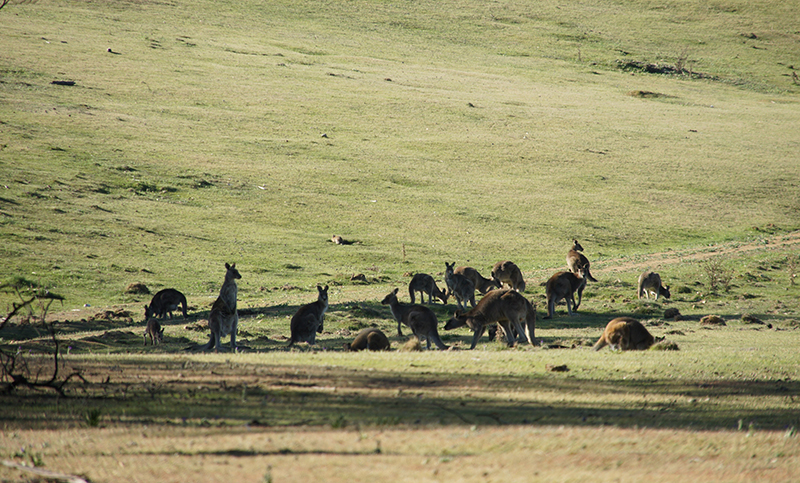
Figure 2 – The grasslands and woodlands of Merambego during dry periods are sometimes stricken with what is known as the green drought, when the ground turns green but pastures do not provide edible grass.
The country gets steeper, hungrier, and drier. When we come into the cypress pine (Callitris endlicheri and C. columellaris) and white box (Eucalyptus albens) country, there are so few grasses it looks like a desert. Then, where the track begins to end near the junction of the Merambego with Byadbo Creek we find a surprisingly good flow of water. But the banks have been smashed. Piles of flood debris four and five meters (13 to 16.5 ft.) high include green tree trunks that have been tumbled downstream and stripped of roots and branches, so they now look like logs freshly prepared for milling. What has been happening in the Byadbo Wilderness? The Merambego catchment is about as dry as it’s possible to get, and yet there’s been a great flood in the adjacent catchment. It’s bizarre. I’ve come here regularly over twenty years to explore and map the Bundian Way, and I’ve never seen so many horses. It must be more heavily stocked now than when it was grazed before becoming part of the park in 1970.
At our campfire that evening we ponder the mystery of so many horses. One creek dry, the other in full flow. Richard Swain is an Aboriginal man, a river guide who’s been running canoe trips along the Lower Snowy for years (Figure 3). He has a good sense of the country and how the water flows through it. In the morning we set off walking westerly along the ancient route of the Bundian Way to see what’s happened farther upstream in the great bowl of the Byadbo Wilderness Area.
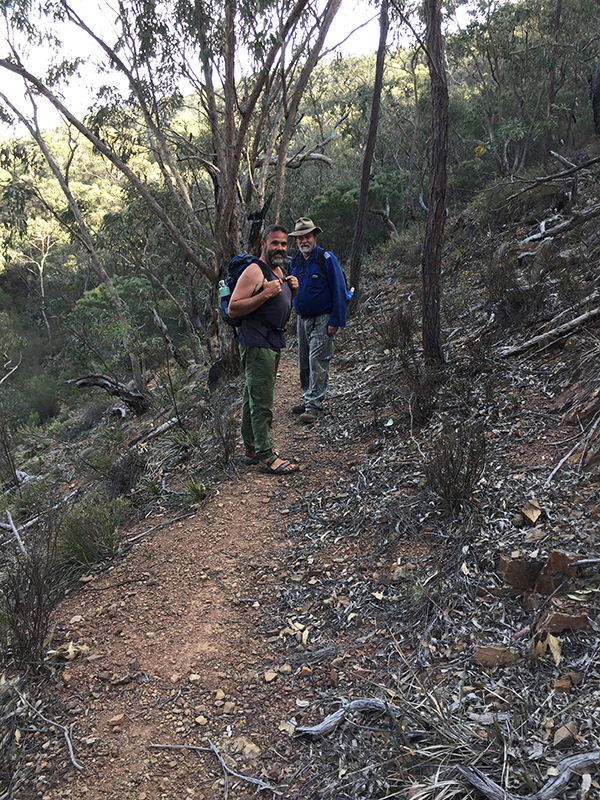
Figure 3 – Richard Swain and John Blay follow the Bundian Way, an ancient Aboriginal route through the Byadbo Wilderness. Photo by Franz Peters.
For the first hour or so the country along the track is extremely dry, and there are fewer surprises than usual such as yam daisies and ground orchids. The little splashes of color lighten the dryness. In a dry tributary, creekside masses of roundleaf mintbush (Prostanthera rotundifolia) flower in a joyful purple. Patches climb the hillsides to mingle with lichen-covered reddish boulders. Below, glimpsing the Byadbo Creek again, it has an unusually good flow. And by the time we reach the junction of Stockyard and Byadbo Creeks it’s clear how terrible the damage has been. The once-lush flats have been cleared of trees altogether. Broken trunks and smashed undergrowth are piled together in heaps amongst trees on the slopes, and the transformation from the scene when I was here last year is complete. Now it’s like a science fiction catastrophe, cleared of vegetation like a great parking lot. We walk upstream, but there’s little point. When we come to the ancient quarry site where the old Aboriginal people had collected and shaped stone ax blanks, it’s been wiped clean. So too all the smaller flats meandering on either side of the stream, their much-varied vegetation as well. At the streamside there were banks of lomandra and bulbines and orchids, food plants for the Aboriginal people as well as the horses. All gone. So too the slender black sallees (Eucalyptus stellulata) and the white box (E. albens). Also gone. On previous visits I saw grassy flats and black sallees and a small group of horses round every bend, usually with foals. Gone. No sign of them today. No matter how far we go, it’s all the same: banks three or four meters (10 to 13 ft.) high like walls on either side of the stream and no greenery whatsoever. The creek more resembles a steep-sided city stormwater drain made of bare concrete where the water trickles over the stony bed.
Back at camp, somewhat dazed, we take stock of the situation. There are unsustainable horse numbers around the dam. They must have retreated from the deeper wilderness and are making their stand there. But there is no grass remaining. How can they live on dirt alone? Closer inspection reveals their condition is so poor they could barely have the strength to make it to the Snowy River, where there would be not much more food than here.
The Merambego catchment apparently missed all the rain from what must have been a very narrow, small-scale but savage, storm that hit the Stockyard only a few kilometers away. This drastic country misses the rainfall of the Australian Alps. Twice in previous years I have seen extreme weather that would have been similar to such an event, but neither had such singular ferocity.
In the weeks that follow my friend Richard and his wife, Alison Swain, record and photograph dying and dead horses along the Snowy River, some frozen in the most agonized throes of death (Figure 4a & 4b). He sees them pitifully wading into the river to claim the last green bits of reed that grow along the banks, often in competition with feral pigs, goats, and deer. The drought continues, like a signal of the changing of the climate.
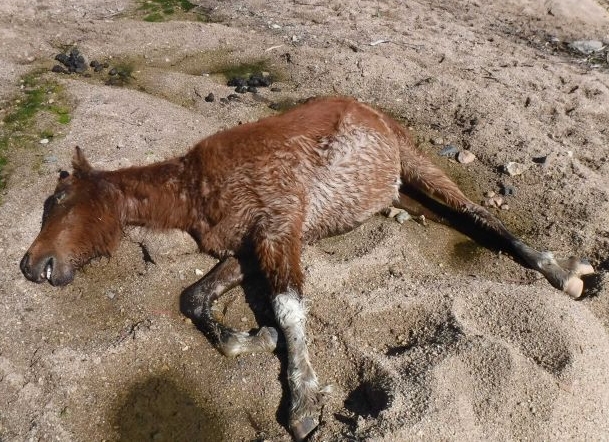
Figure 4a & 4b -While the dry weather continued and grasses failed, many feral horses never made it back to the Snowy River from Byadbo. Photos by Alpine River Adventures and Richard Swain.
A Follow-Up Walk: Beyond Stockyard Flat
As the drought intensifies, some 12 months later, in November 2019 I am joined again by Richard, as well as Franz Peters, naturalist and one-time park ranger, for another walk into Byadbo to take a closer look at what had come to pass there. We have limited time and plan to walk this 30-kilometer (18.6-mile) section in one day, from Merambego to the crest of the Black Range that divides the headwaters of Byadbo Creek and the Sheepstation Creek tributary of the Snowy River at 1,000 meters (3280.84 feet) elevation. Wildfires have already started farther north in Queensland and are a potential threat here due to the ongoing extreme dry conditions. We depart Byadbo Gap about 8 a.m. Our aim is to chart how that weather event of about March 2018 we noted last year has impacted the ancient Bundian Way walking route.
Since 2002 and especially during the 2010 Bundian Way heritage survey for Eden Local Aboriginal Land Council, I have walked this area in different ways many times while mapping it and researching and conducting oral histories with old cattlemen whose families had used the area from settlement until it became a national park in 1970. We recorded the routes they used and compared them with older maps and historical surveyors’ notes. At the time of our survey the Aboriginal crew dismissed the extreme difficulties of walking the area, saying people need a challenge nowadays, and this would be the most important part of the walk. It is where you can prove yourself. That said, walking here is indeed still a challenge.
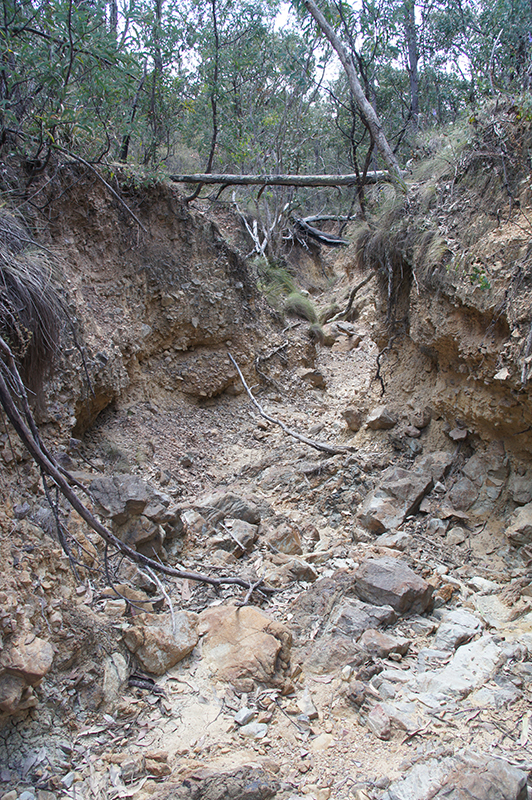
Figure 5 – The extreme drought in the Stockyard Creek tributary of the Byadbo continued after the downpour that caused massive riverbed, sheet, and gully erosion.
Along Stockyard Creek that one flood event tore countless slender black sallee eucalypts out of the ground and deposited them far downstream in the piles of debris well above the earlier flood lines. The scene has barely changed in twelve months. Only sheet erosion on either side of the creek is more obvious. The few surviving flats have been grazed bare. Our clamber to the crest of the Stockyard Ridge is hot and dry and challenging, and yet these grassy woodlands don’t appear to have suffered too much from the rain and lack of it. We follow the ridgetop for a few kilometers before we can descend a ridge to the junction of the Byadbo and O’Hares Creek in a traverse I’ve undertaken many times before. But this time the westward flowing drainage lines off Stockyard Ridge have suffered massive gully erosion most likely triggered by the feral horses grazing the drainage lines too heavily (Figure 5). The narrow, crumbling gullies are four and five meters (13 to 16.5 ft.) deep. It would be hard to find stronger evidence of the damage being done by feral horses. There was no sign of the gullies when I walked the route during the heritage survey in 2010, just as they don’t show on hand-drawn maps dating from the late sixties and early seventies.
Arriving at the junction of the Byadbo and O’Hares Creeks, there are few signs of any erosion such as we found along Stockyard. Several shallow pools survive in the creek bed near the junction, and none afterward. There is barely enough water, I guess, to last more than a week or two without real rainfall, but its quality is so disgusting, foul, and smelly few creatures would brave to drink it. The feral horses could only retreat from here to the Snowy River or to the dam at Merambego.
Edbo Flat
Byadbo isn’t rich country. It ran large numbers of cattle at the time of first settlement during the late 1820s, but year by year those numbers kept falling. What used to be a good track ran through it, a groove in the ground maybe a meter wide, going east to west along the section of Byadbo Creek that leads to Edbo Flat. Here, there is a substantial area of lush native grassland. Hilltops overlooking the flat land show all manner of Aboriginal artifacts. It had always been regarded as a surprising, special place located in the middle of nowhere or the center of everywhere else. I had followed the track on many occasions over the years. But now, everything is different. The delightful route along creek flats beside the meandering creek overshadowed by eucalypts is changed. The creek is dry. And the flats and nearby dry-as-a-bone hillsides are now overgrown with interlaced branches of common cassinia (Cassinia aculeata), about three meters (9.8 ft.) tall. The environmental weed has greatly thickened up and spread since I was here five years ago. The main cause of the cassinia’s spread is heavy grazing by the feral horses. The bare soil invites rapid invasion. Once invaded, the feral horses turn their attentions to the understory farther uphill. We have to crawl or smash our way through the scrub to make slow, unpleasant progress while its spent flowers explode about our heads and necks, and the debris get in our eyes and ears and down our backs where they cause itching. The leaves are sticky and unpleasantly smelly and irritate the skin and cause allergic reactions.
The Edbo Flat was like a Shangri-La or a magnet for its swampy grassland and wildflowers, surrounded by a ring of rugged mountain crests. After the extensive hot fires during the summer of 2003, upper parts of the Edbo Flat grasslands started to be overtaken by heavy regrowth and scrub made up of mostly white sallee (Eucalyptus pauciflora), black sallee (Eucalyptus stellulata), silver wattle (Acacia dealbata), and especially the dreaded cassinia. After disturbances such as hot fire or heavy grazing, when the earth is cleared to bare ground, the country responds with growth of weeds and/or scrub (Figure 6). When the firetrails were bulldozed along ridgetops, they were quickly lined with barriers of cassinia.
Any thoughts we might follow the old cattlemen’s route beside the creek to the flat are abandoned. We now pass through the driest and most rugged parts simply because there is less cassinia. The three of us agree that the best way to regain balance in the locality is to get rid of the horses and reintroduce traditional cultural burning as practiced before colonization.
Along the Bundian Way, a heritage recognized pathway through the park, the horse overpopulation has ravaged the countryside, and yet the landscape has many remarkable features. It excites me to find places where metamorphosed slates have hardened in waves that break across the strata producing ax head–sized blanks as we found at the old quarry. Near the end of the walk and facing nightfall in a state of near-total exhaustion, there are moss-covered multicolored stones of volcanic origin where, beyond the cassinia, the cypress-pine dominate steep hillsides that slope towards the Snowy. It’s adventurous country of remarkable beauty. Across the silvery tones of the mountainside, its gray box is studded with the gold of mistletoe, which stands out at a distance to make the slopes look like a mighty Aboriginal dot painting.
Examining Kosciuszko National Park
The 6,900-square-kilometer (2,700 square miles) Kosciuszko National Park includes the highest parts of the Australian continent and is home to the iconic Snowy River. Within 50 years of European settlement, the Alpine grasslands of the high country were recognized as valuable drought pastures in a region much prone to drought. Subsequently, a few horses escaped or were set free and began to populate the pastures.
If it were a farm, the national park would clearly be overstocked. Allowing the overpopulation to continue to such an extent should have attracted prosecution by the anticruelty authorities. And Byadbo Wilderness is not the only part of the park with unsustainable numbers of feral animals. In the adjacent Pilot Wilderness, the headwaters of the mighty Murray River have also been impacted by feral horses. Instead of extensive swampy wetlands holding the water back like a sponge for slow release to the westward plains, they have been grazed to mud that will soon enough become erosion gulches. Other parts of the national park rising into the Alpine habitats are also suffering. Unique wildlife is threatened. The countryside has never quite experienced an impact like this.
Historic Romanticism
In 1895 a foremost bush balladist, Banjo Patterson, wrote a poem that was an instant success. “The Man from Snowy River” extolled the wild bush horses and the man whose horsemanship single-handedly rescued a colt that had run away to join the wild mob. The poem’s ongoing popularity brought a romantic aura to feral horses. At the time well-bred horses were highly valued. None were willingly surrendered to the wilds. Every blade of grass was valuable and wild horses were shot on sight. Any responsible farmer manages the stock on his land and strictly controls their numbers seasonally.
The poem was quickly taken to heart by the Australia public and is now arguably the nation’s best known and favorite poem. Today the horses that would have been shot by the graziers of yesteryear have been romanticized as brumbies in books and movies. Tourists want to see brumbies in the wild, and horse tours have become popular.
The Science
Everybody knew the horse population had increased to an alarming extent, especially given the effects of climate change and drought. At a scientific count in 2014 there were nearly 10,000. But for years, the extent of their increase was hotly debated.
If the horse numbers are so considerable that in parts of the park they are dying of starvation, how can you change management of public lands where the managers’ hands are tied? How can we allow the cruelty to continue while fragile systems at the headwaters of the dry continent’s significant waterways are put under threat and the effects multiply? How can public opinion be turned around? Isn’t good science the answer to such a deplorable situation?
Concern over the growing impact of a feral horse overpopulation in Australia’s biodiverse high country was increasingly voiced by scientists, land managers, and members of the public. But the New South Wales (NSW) state government enacted the Kosciuszko Wild Horse Heritage Act of 2018, which provided legal protection to the feral horses on cultural grounds. Scientists, much alarmed about the environmental hazards raised by the legislation, in an atmosphere of desperation, organized the Kosciuszko Science Conference to bring together key scientists and managers of the region in late 2018. Twenty-two scientists presented their research on current and potential impacts of feral horses across natural environments of the Australian Alps.
An accord issued after the conference and signed by more than 120 attendees stated that “scientific evidence shows that there is a clear and present threat to the natural water catchments and the natural ecosystems of Kosciuszko National Park and other Australian Alps national parks caused directly by thousands of feral horses” and called upon the NSW government “to substantially and urgently reduce feral horse populations in these protected areas” and repeal the Kosciuszko Wild Horse Heritage Act 2018 to restore the protected status of Kosciuszko National Park (Worboys et al. 2018).
In autumn 2019, the Australian Alps National Parks Co-operative Management Program working with Parks Victoria, NSW NPWS and ACT Parks and Conservation Service undertook a feral horse aerial survey in the Australian Alps. This survey followed the 2014 model by employing the same operational and statistical methodology. It allowed for the estimation of both the current population and the change in horse numbers in the surveyed areas during the past five years. Results from both surveys indicated that the overall Australian Alps feral horse population is large, widespread, and continues to increase in size. The estimated overall feral horse population within the combined surveyed areas more than doubled during the five years. The horse population across the area increased from an estimated 9,190 in 2014 to 25,318 in 2019. This is an increase of 23% per annum. Such rates of population growth and increase are consistent with international research, survey, and monitoring of feral horse populations across the world.
Like the case for taking action to reduce climate change, if the overwhelming scientific case against protection of feral horses is not sufficient to persuade our legislators to change the law, then what is?
Like the case for taking action to reduce climate change, if the overwhelming scientific case against protection of feral horses is not sufficient to persuade our legislators to change the law, then what is? How can it be that we allow spurious, emotional arguments to win over good science? Can you fight poem with poem? Why not relegislate nature to bring about change? Will changing the language and stories save the nation’s most significant national park?
Plight of the Wild Lands
If there were scenes such as we had seen at Merambego on private property, I believe the owners would be prosecuted for cruelty to their animals. National parks aren’t here for the convenience of horses; rather, in this region they’re here for the unique native wildlife that includes the emus and kangaroos of the national coat of arms, as well as koalas, eastern quolls, antechinus, lyrebirds, and platypuses. Farms are for horses. The park is not drought pasture. I recall how a few times over the years I saw occupied horse floats visit Merambego and then leave empty, and now realize they weren’t on NPWS business but rather leaving behind their old station horses. I guess the farmer preferred to do this rather than send his old horses to a knackery. But while I can’t say all horses in Merambego were brought here by farmers, I do believe some of them survived and were joined by others from the drought-grizzled Byadbo Wilderness, resulting in the unsustainable population.
Various factions of the NSW government were already at odds on a range of environmental issues from climate change to privatization, management of the brumbies to water rights, land clearing, logging in national parks, protection of native grasslands, and more (Davies 2019). NSW deputy premier John Barilaro was instrumental in obtaining the heritage listing for brumbies through his controversial legislation in the NSW Parliament. Barilaro represents Monaro, which includes the region most infested by the feral horses and has been advised by his mentor and former state member Peter Cochran, who runs horse treks through the northern part of the park. Cochran has long argued official numbers of wild horses are grossly exaggerated (Ellicott 2019).
Cochran, who freely calls upon a wide range of political contacts, admits using his influence to enhance his horse-touring business and bring about amendments to the law that protects the horse paddock he regards as his right (Slattery and Worboys 2020). He rejects scientific arguments to sustain unique flora and fauna as “fake news,” and adds, “I reject the science because I don’t trust the scientists. Nobody does” (French 2019).
At the same time the more conservative side of government pursues an agenda of gradual privatization with the aim of smaller government. Staffing in national parks has been reduced drastically. Numerous other measures have been undertaken to override the scientifically based management of national parks. The politicians responsible for the reforms appear to hold distrust of science as an article of faith. Their actions to dismantle an otherwise effective number of nature management agencies would appear to arise from a belief that nature can take care of itself. NPWS staff numbers are now so low across the state the agency will inevitably be accused of incompetence in its management of the wild estate.
But it is popularly accepted in Australia that government at all levels has responsibility for nature. It must provide clean air and water and take reasonable steps to protect us from wildfire, for example, as well as maintaining a system of wild places or national parks. Outsourcing park management won’t allow the necessarily broad overall systematic management of natural areas. The market will not maintain our parks for us. I was recently told by a government figure that the reduced staffing levels in parks meant they would simply have to work smarter. But there’s a fine line between the staff working “smarter” and system collapse, especially in times of emergency. The most beautiful and special places should be managed for all, and not commercialized or privatized. Thus, an independent national park system is under threat.
Even though the plight of the Byadbo Wilderness is sad, much the same story plays out across Kosciuszko National Park, the showcase of Australia’s distinctive high-country wild nature. The public gaze has focused on the need to look after our wild places and yet the minimal emphasis on feral horses demonstrates a lack of depth and understanding of the landscape. It excuses the gravity of the damage they bring to the fragile ecosystems, not to mention the pain and suffering the unadapted horses will endure when drought tightens its grip once more.
Protected areas are intended to safeguard biodiversity in perpetuity, yet evidence tells that Australia is not the only nation taking steps such as the wild horse bill to undermine protected area durability and efficacy. Legal changes that include protected area downgrading, downsizing, and degazettement are happening across the world. In fact, the United States, Brazil, and Australia lead the world. Most of the changes (62%) are associated with industrial-scale resource extraction and development (Golden Kroner et al. 2019).
Shelley famously said that “poets are the unacknowledged legislators of the world,” but his words have brought an ironic twist to Australia’s best-known verse. The NSW government’s brumby bill was intended to stop the culling of feral horses, and yet the subject of Banjo Patterson’s poem is the recapture of a valuable colt that had got away and “joined the wild bush horses.”
Conclusion
Many Aboriginal people and their Elders joined together in a Narjong ceremony to call for the true ancient heritage of the land to be recognized above that of a feral interloper that destroys Aboriginal sites in the upper catchment of streams and dries the rivers servicing Aboriginal communities downstream. They are especially dismayed that the heritage of feral horses has been raised above Aboriginal cultural and natural heritage (Ulman 2019).
We’ve known what to do and how, and yet our politicians who want to make all the decisions have been led down the garden path by the corruption of language. Aboriginal people lived on the continent for 70,000 years or more and maintain a respect for Mother Nature. It’s time we turn things around and rediscover that respect. Language has become detached from the real world just as many feel themselves removed from “nature,” that they have lost their sense of belonging, their sense of being connected to a particular place, of being responsible for it, of caring for it. We must find that sense of belonging and connection again.
And, how, I wonder, can we reengage the popular imagination with the realistic truth of nature’s predicament. Desperate action is called for. Poets, artists, scientists, Aboriginal community leaders, and other opinion-makers will have to rediscover the language of the natural world to distinguish it from the hollow “concepts” our politicians constantly argue about. If we can follow Shelley’s dictum, it’s time for us to relegislate for the survival of wild nature beyond this day and age. One way to begin is to deromanticize the “heritage” animals and the impacts of feral flora and fauna to keep the unique qualities of Australia’s high lands and their wildlife.
It is a very strange impulse that suggests we can improve on nature, that we can see, for example, a very beautiful wilderness upland meadow that has found its balance and form with the husbandry of many thousands of years and think that all this place needs is a mob of horses to perfect it. The consequences can be found in the desolated Stockyard and the tortured forms of dead brumbies beside the Snowy River.
About the Author
JOHN BLAY is a writer and historian of Australia’s southeastern forests. His works include the southeast forests trilogy, the most recent of which is WILD NATURE: Walking Australia’s South East Forests, published by NSW University Press in mid-2020; https://southeastforests.com.au/;email: sefproject@netspeed.com.au.
References
Davies, A. 2019. How the fight over brumbies is making the NSW Liberals and Nationals go feral. https://www.theguardian.com/australia-news/2019/sep/01/how-the-fight-over-brumbies-is-making-the-nsw-liberals-and-nationals-go-feral, accessed September 14, 2019.
Ellicott, J. 2019. Environment minister vows to reduce damage from Kosi brumbies. https://www.theland.com.au/story/6375597/brumby-control-to-resume-in-kosi-within-weeks/, accessed September 2019.
French, R, 2019. Stalking horses: in the NSW High Country, the battle over brumbies in the national park goes beyond environmental arguments – it’s a culture war. Weekend Australian Magazine. February 16–17, 2019, pp. 14–18, Sydney.
Golden Kroner, R. E. et al. 2019. The uncertain future of protected lands and waters. Science 364(6443): 881–886. DOI: 10.1126/science.aau5525.
Shelley, P. B. 1840. Essays, Letters from Abroad, Translations and Fragments. London: Edward Moxon.
Slattery, D., and G. Worboys. 2020. Kosciuszko: A Great National Park. Canberra, Australia: Envirobook.
Ulman, J. 2019. Narjong means fresh water. AWAYE, ABC Radio National, August 13, 2019 at https://www.abc.net.au/radionational/programs/the-history listen/najong/11341946?fbclid=IwAR333RdYBT- 5WfzK7JCqzZDnmmGYA4qBTUdtNRI0pVqLj2daIB5DSxyibqY.
Worboys, G., D. Driscoll, and P. Crabb. 2018 Feral Horse Impacts: The Kosciuszko Science Conference– Conference Abstracts. Canberra: Australian Academy of Science, Deakin University, and the Australian National University, with addendum.
Read Next
Protected Areas in a Post-Pandemic World
I am excited that 2021 brings us the 27th volume of the International Journal of Wilderness, and with is comes new beginnings.
Interpreting John Muir’s Legacy
In judging Muir’s legacy, we should be compelled to look inward, admit our own shortcomings, and acknowledge that we, too, have been participants in a system that oppresses Black Americans, Indigenous peoples, and other people of color.
Seasonal and Destination-Based Variation in Visitor Travel Routes in a Designated Wilderness
As Global Positioning System technology improves, so does our ability to integrate spatiotemporal data into management efforts, including in designated wilderness areas.



